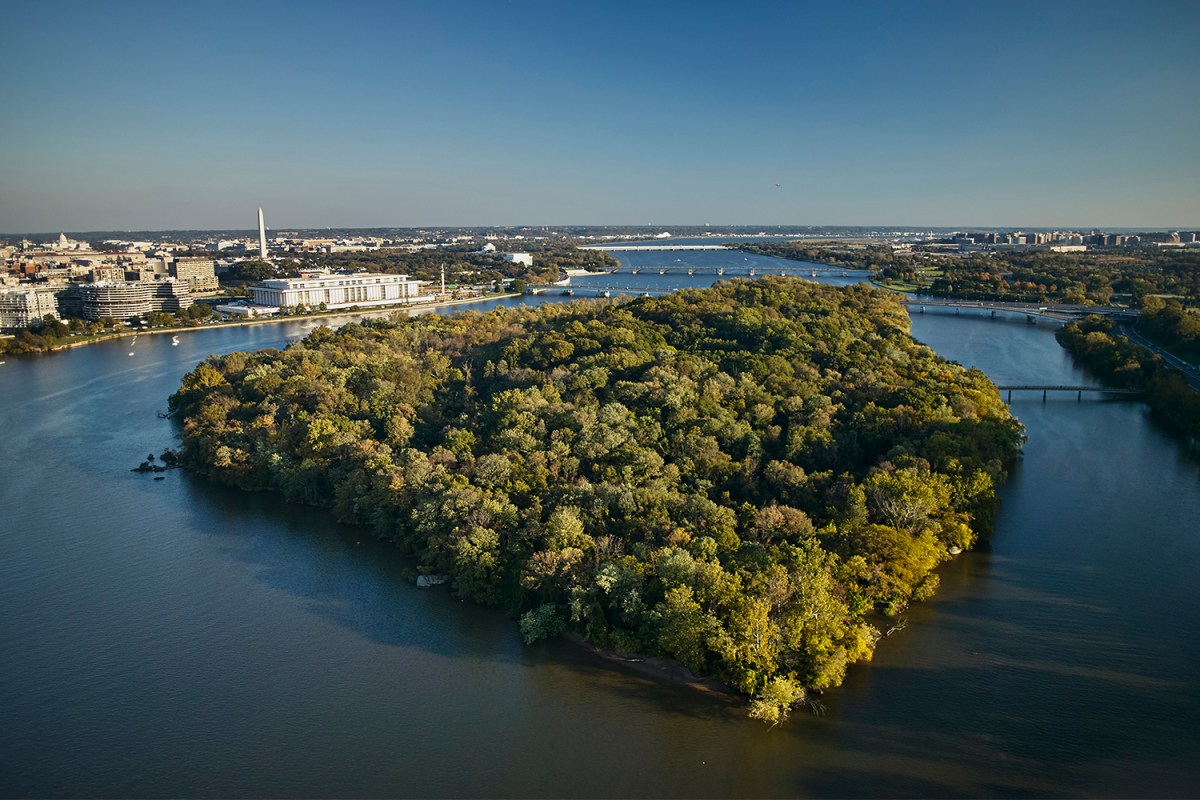When Lorde told fans at the Anthem earlier this month that she went swimming in the Potomac River, the online response was instant, devastating and antibiotic-centric. (Sample: “Lorde just told the crowd at the Anthem that she swam??? In the Potomac??? To get a feel for D.C???? The crowd is in SHAMBLES.”) The crowd was half right: Potomac swimming in the District is officially verboten. However, according to Potomac Riverkeeper Network (PRK), an environmental watchdog, the Potomac is actually clean enough for swimming.
PRK’s Dean Naujoks, who works to enforce water quality laws in D.C., says the swim ban, which he calls “archaic,” should be lifted. Swimming has been illegal in the Potomac within city limits since 1971. If you try to swim in the Potomac inside the District, you’ll receive a fine from Harbor Patrol. Naujoks says the river, once called a “national disgrace” by President Lyndon Johnson, has gone from shameful to swimmable all thanks to the Clean Water Act which is celebrating its 50th anniversary this year.
While inside-the-District swimming in the Potomac River is illegal, outside of D.C., tens of thousands of people fish, boat and swim in a river once rife with “decaying sewage and rotten algae,” another quotable quote from Johnson. Fishing and boating in the Potomac within District lines is legal.
It wasn’t legal where Lorde may have lapped, but it wasn’t toxic. It’s not 100% clear where Lorde swam the day of her D.C. concert, but, if Naujoks’s educated guess is right — that she splashed in near the Wharf on the Southwest Waterfront near the Anthem — the water passes the safe-to-swim test.
“We’ve been sampling [the water] for three years, and we have plenty of data that shows that a lot of these places like the Washington Channel where we believe [Lorde] was swimming has an 87% pass rate. So almost 90% of the time that water is clean enough for human contact,” says Naujoks. “Thousands of people on the river, like Lorde, are going in the river and swimming and they don’t even realize they’re breaking the law. This just highlights how ridiculous it is to have a swim ban when somebody like Lorde visits, gets on a boat and then takes the swim on a hot summer day. She didn’t realize she was breaking the law. That’s the absurdity of that law.”
While the Potomac River provides water to six million people in the DMV, in 2012 the organization American Rivers named the Potomac the most endangered river in the U.S. The report is not a list of the nation’s “worst” or most polluted rivers; rather, it highlights those rivers “confronted by critical decisions that will determine their future…and encourages decision-makers to do the right thing for the rivers and the communities they support.” As a Potomac Riverkeeper, Naujoks has been doing just that for years.
“We passed legislation in 2017 making Alexandria fix their combined sewer system and eliminating sewage discharges to the river by 2025. And then we’ve been fighting D.C. for years on making them comply, and they will comply by 2030,” he says. The campaign’s goal is also to lift the swimming ban, which, he says, gives the river a bad rap. “It carries a negative stigma about the river,” he adds. “I’m glad Lorde got to enjoy the river. People, like the thousands in the audience during Lorde’s concert, believe the Potomac is dangerous. We’re trying to change that perception [to communicate] that it’s not a polluted river like it was 34 years ago. President Johnson said it was a ‘national disgrace’ in 1965. But he also said the ‘Potomac should be a model for recreation and use,’ and it’s becoming that.”
The Swimmable Potomac Campaign that launched in 2019 tests 60 miles of the river weekly. Each Thursday the data is posted to a global swim app, Swim Guide, which monitors 8,000 swimming locations around the world. The app lets users know where swimming is safe and “hot spots” that should be avoided.
“52,000 District residents have gone to Swim Guide to find out about our data whether it’s safe to use the river or whether it’s not,” says Naujoks. PKR provides a simple pass/fail notification: green for safe, red for not safe. When it rains after the water has been tested, they’ll add a yellow flag to highlight that the rain could invalidate the results. When it rains, the combined sewer systems are triggered and overflow into the river. So, a good rule of thumb for any river, says Naujoks, is if it rains pretty hard, you want to stay out of the water for the next 48 hours.
You also want to always stay out of the water in places like Rock Creek Park, he says. Even though Rock Creek is within District limits, a lot of people — including kids — wade in the water, an activity which makes Naujoks shudder because the water quality in Rock Creek is so bad. It’s a small body of water in which combined sewer discharges are dumped, “So that [water] never passes,” he says. “And that’s why one of our goals is better public notification. That’s why this Swim Guide app is really important. So that people can literally look on a Friday, and it’ll be up-to-date data showing where are the safest places to go swimming in this area that weekend.”
For those wondering, don’t even try to dip a toe in the Tidal Basin, the man-made reservoir located between the Potomac River and the Washington Channel famous for its cherry trees. Though it was a popular, though segregated, swimming hole more than 100 years ago, the swimming ban there is a federal, not District, law.
Where you can swim legally and safely in the Potomac
Simply put, you need to go upriver or downriver to swim in the Potomac River. Downriver will bring you to National Harbor, about a 15-minute drive from D.C. — a popular and safe open swim spot, according to Naujoks. Further downriver, about 30 minutes from the city, is Pohick Bay. The other way, you have to go all the way above Great Falls near Seneca Breaks before it’s legal to swim. It’s important to note that the swim ban around Great Falls, which is imposed by the National Park Service, is because of the deadly currents, not a pollution-based law.
But to plunge in any of these popular Potomac River spots, Naujoks notes you’ll need a car or a boat; there’s no public transportation. Within the District, people can enjoy the river in a power boat, kayak, standup paddleboard and sailboat, only if they can afford to buy or rent a legal, floatable device. “We want everyone to use the river. Right now, low-income communities, especially people of color, don’t have the means to buy a powerboat or even a kayak, and we feel like they should have the right to use this river to swim. We want swimming to be open to everybody,” he says. “This is about equality. We’re not just talking about making it legal to swim for the boating community. Every citizen in this region should have a right to use and swim in this river. It belongs to them. It’s a public water right.”
The good news, according to Naujoks, is that earlier this year, for the first time, the District began changing the language used referring to the swim ban. “[It’s gone] from ‘We’re just gonna enforce the swim ban’ to ‘We’re open to lifting [the swim ban],’” he says, though unfortunately they’ve said nothing more specific than that.
D.C. has “changed the use of this river,” he continues. “And that’s not good. That’s not good for the river. It’s not what the Clean Water Act was intended to do. The Clean Water Act was about making sure that every American has the right to fishable, swimmable waterways. We firmly believe in that right.”
This article was featured in the InsideHook DC newsletter. Sign up now for more from the Beltway.

























